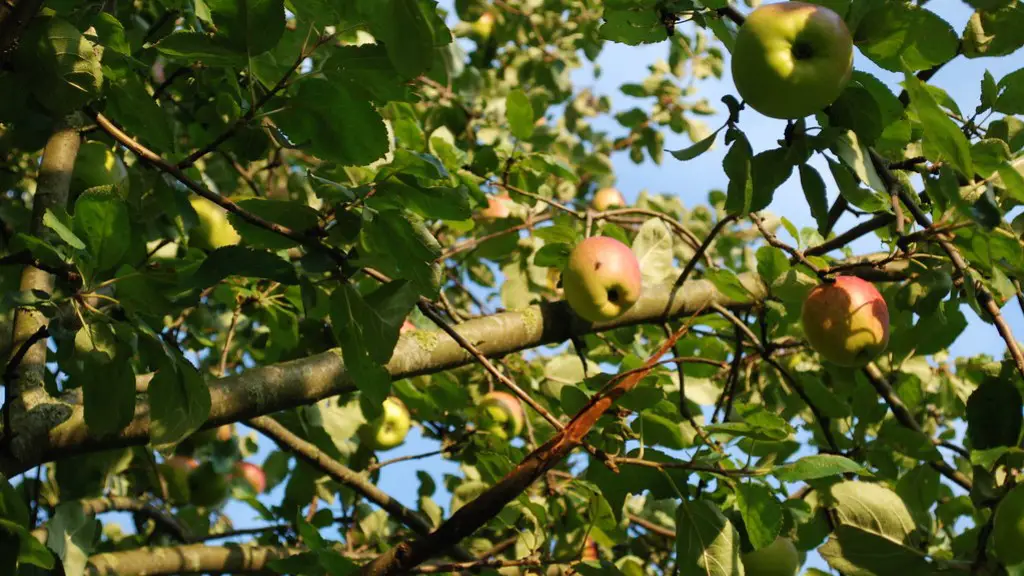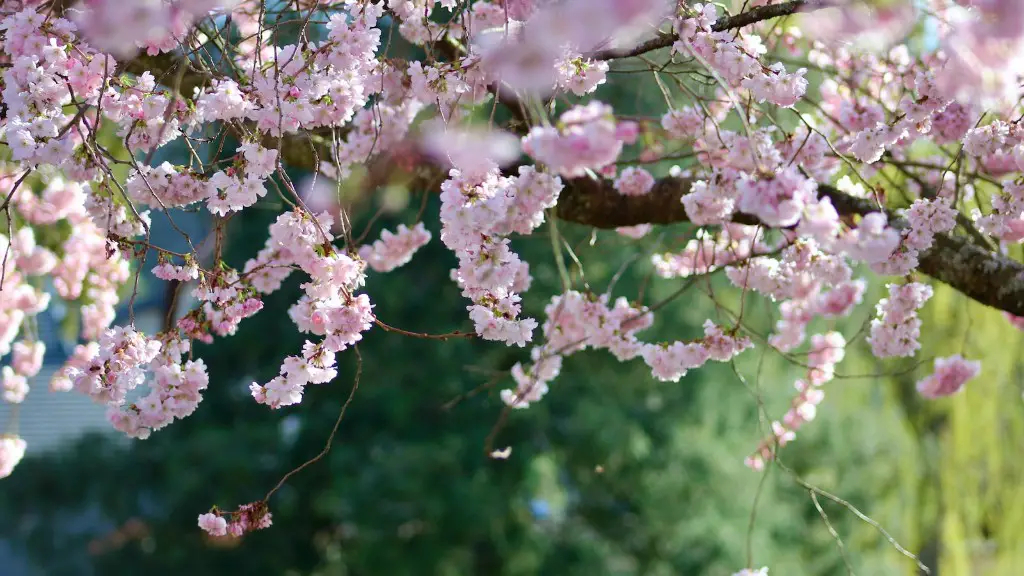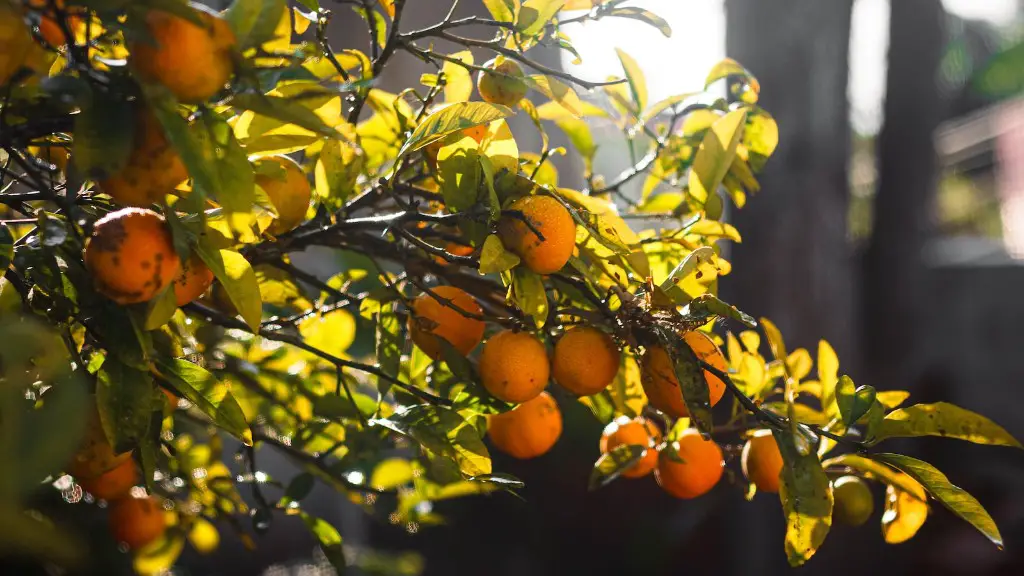When an apple tree fails to produce blossoms in the spring, it can be a worrisome and perplexing problem. In many cases, a lack of blooming can be traced back to environmental factors, improper pruning, or incorrect planting. To understand why your tree isn’t flowering, it’s important to look at the wider picture and assess the tree’s health.
Poor tree health can cause apple trees to refuse to bloom. If the tree isn’t getting adequate light, water, and nutrition, it won’t have the energy to wasting in producing flowers. Likewise, if the tree is under extreme stress from drought or low temperatures, it may wait until conditions improve before flowering. Pests and diseases may also cause the tree to decline if left unchecked.
Apple trees also require a certain amount of chilling hours – a period of time where temperatures remain below 7°C – for flower buds to develop properly in the spring. If the tree hasn’t been exposed to adequate chilling hours in winter, it’s likely to delay or completely skip blooming season.
In addition to environmental factors, apple trees may fail to flower due to improper pruning or incorrect planting. Poor pruning practices can reduce the likelihood of flowering by disrupting the tree’s natural growth pattern. On the other hand, trees planted too deep in the ground can suffer from a lack of oxygen, leading to a decline in vigor and lack of flowers.
Finally, apple trees are sensitive to drought. During periods of extended dryness, they may withhold blooming in order to conserve resources and protect themselves from damage. Once enough rainfall is received and drought conditions recede, the tree may resume flowering and producing fruit.
Environmental Factors
The most common reasons for an apple tree failing to bloom usually come down to environmental conditions. Poor nutrition, extreme temperatures, and inadequate light and water can all prevent an apple tree from producing flowers in the spring. Trees may also require a certain amount of cold winter temperatures and chill hours in order to stimulate the flowering process.
Adequate nutrition is essential for apple trees to bloom, so it is important to regularly provide fertilizer or compost and avoid compacting the soil around the tree’s root system. Additionally, apple trees are sensitive to drought and extreme temperatures, and fail to flower if the conditions become too extreme. In some cases, the tree may show signs of flower buds, but the blossoms won’t mature and open if conditions are too dry or hot.
Finally, apple trees require at least six to eight hours of sun per day for flower buds to develop properly. If the tree is consistently shaded for extended periods of time, it’s likely to fail to bloom in the spring.
Pruning Practices
In addition to environmental factors, poor pruning practices can lead to a lack of blooming. Pruning encourages tree growth, so it is important to follow the natural shape of the tree and prune selectively throughout the year. Over-pruning can reduce the tree’s vigor and influence when it blooms.
When pruning apples, there are certain techniques to keep in mind that will not compromise the tree’s flowering potential. It is important to prune the tree when it produces fruit, as this encourages flowering and fruiting. Apple trees should also be pruned in autumn and winter, as this results in better fruit production the following spring.
When pruning an apple tree, it is also important to know when and how much to trim. Trees should be pruned in the autumn and winter, when the leaf foliage has shed for the season. The size of the pruning depends on the size of the tree, with larger trees requiring more trimming. All cuts should be made with a sharp pruning saw, and should be done in a downward angle from the branch’s tip to its base.
Planting Depth
Planting an apple tree too deep in the ground can have serious implications for its flowering potential. Trees planted deeper than their original soil level will suffer from oxygen deprivation, which can lead to growth decline and lack of flowering.
When planting an apple tree, it’s important to ensure that it’s done correctly and that the roots are well supported in the soil. The tree should be planted at the same depth as it was in the nursery, and the hole should be twice as wide as the tree’s root ball. After planting, the soil should be thoroughly watered, and any excess should be removed.
It’s also important to remember that apple trees do not do well in damp soil, so it’s important to ensure that there is good drainage in the location where you are planting the tree. Poor drainage can cause soggy soils, which can lead to root rot and, eventually, lack of flowering.
Drought Conditions
Apple trees are particularly sensitive to drought conditions and may refuse to blossom if deprived of water for extended periods. During periods of drought, apple trees will put all their energy into self-preservation, bringing growth and flowering functions to a standstill. If a tree is in a state of severe drought stress for an extended period, it’s likely to fail to bloom in the spring.
If a tree is struggling with a lack of water, it’s important to provide it with consistent irrigation as soon as possible. To avoid stressing the tree, it is best to provide a slow and deep watering to the root system and avoid soaking the foliage with water. This will allow the tree to gradually recover and resume flowering when drought conditions ease.
In some cases, apple trees may already be too far under stress from drought to flower in the spring. If this is the case, the tree should be given additional protection during summer, such as regular irrigation and mulching. This will help the tree to conserve energy and survive into the following season.



